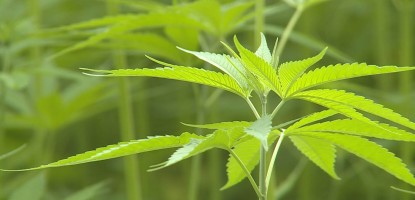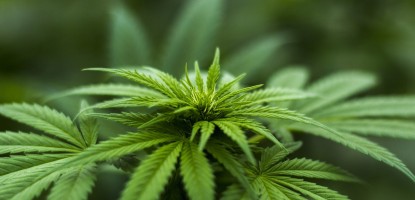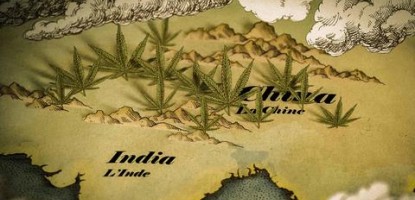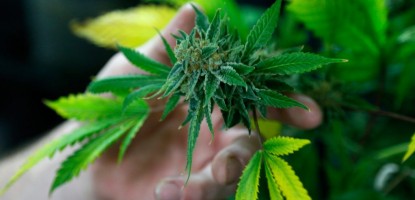What Is Industrial Hemp? It’s Not Marijuana

Industrial hemp is a cannabis plant that contains less than 0.3% of the psychoactive compound THC. This means that it can't get you high. In other words, it's the non-drug form of cannabis. And it has a whole host of other uses.
Hemp is a versatile plant with many uses, from food and fuel to building materials and textiles. This makes hemp an ideal crop for farmers and manufacturers looking for sustainable and eco-friendly products. In addition, hemp can be used to create various products, including paper, rope, clothing, and even biodegradable plastics. With so many uses, it's no wonder hemp is often referred to as a "miracle crop."
How Do Hemp and Marijuana Differ?
Hemp and marijuana are both obtained from the Cannabis sativa plant species but are different varieties. Hemp contains 0.3% or less of the psychoactive compound THC, while marijuana contains up to 30% THC, which produces the "high" associated with marijuana use. Hemp is used for various industrial and commercial purposes, including paper, textiles, biodegradable plastics, construction, health food, and fuel. Marijuana is used primarily for recreational and medicinal purposes.

How is Hemp Cultivated?
Before cultivating hemp, you should know a few things about the soil. Hemp grows best on soil rich in organic matter and has a pH of 6.0 or higher. Hemp is sensitive to flooding and compaction and does not thrive in wet soils or land with heavy clay. Soil testing is important to ensure you don't miss any vital clues.
Fertilizers and nutrients are essential to growing hemp. It will require two times as much nitrogen as it needs in its initial growth stage. However, hemp will tolerate drought once it becomes well-rooted. Typical fertilizer recommendations are between 20 and 28 pounds of nitrogen per acre. In addition, farmers should also give their crops a small amount of potassium, which is important for flowering. Hemp requires a moderate climate with at least 25 inches of annual rainfall.
What are the Properties of Hemp?
It contains bioactive components.
Industrial hemp has several bioactive components, including cannabinoids, polyphenols, and fibers.
The bioactive components of hemp have several uses, ranging from food and beverages to the construction industries. Because hemp seed has so many uses, it is a valuable by-product of hemp seed processing. By-products from hemp seed processing are rich in fatty acids, sterols, and terpenes, which can help fight inflammation, aid digestion, and even improve sleep quality.
Its fiber and seed are versatile.
One of the most commonly used industrial hemp materials is industrial hemp fiber, a naturally occurring material that can be harvested from the stalk. This material can be spun or woven into various materials and products, including string, tough fabric, and hempcrete.
Hemp seed, a primitive source of protein, fiber, and fat, has been used in traditional oriental medicine to treat various ailments.
In recent years, the popularity of hemp fiber has increased. In addition to its therapeutic properties, hemp is a viable, environmentally friendly alternative to other plant fibers. Industrial hemp fiber may even be the perfect solution for those looking for a natural fiber alternative.
It contains protein
The benefits of industrial hemp protein are significant. The plant protein is rich in polyunsaturated fatty acids, including omega-3 and linoleic acid. Omega fatty acids are important for cellular membranes, contribute to heart health, and regulate metabolism.
Protein powders are popularly made from animal and plant sources. Hemp plant protein contains the same essential amino acids as whey protein, so hemp protein is an excellent plant-based alternative.
Hemp protein short-chain peptides have antioxidant properties, antihypertensive properties, and hypocholesterolemic effects. Those studies indicate that hemp protein is a beneficial supplement for muscle health.
It contains healthy fat
Hemp seeds are rich in fiber, essential amino acids, and fatty acids. Its seeds have high protein content (20-25%) and contain many lipids. These fats make hemp suitable for human consumption because it is low in calories and high in essential fatty acids. Hemp oil has high omega-3 fatty acids, including linoleic acid, which accounts for sixty to seventy percent of the hemp seed's fat content.
In addition to being a multi-purpose crop, hemp is one of the oldest plants cultivated for its nutritional value. Hemp seed is a primitive source of protein, fiber, and fat, and it has been used in traditional eastern medicine for its healing and nutritional properties. These benefits make hemp seed a unique health food with many benefits.
Hemp seed contains a unique combination of fatty acids. Omega 3 and omega 6 are both essential fatty acids that humans need. These essential fatty acids are found in industrial hemp seeds, and hemp seed oil is widely used in food and cosmetic products.
What are the Benefits of the Hemp Plant?
Unlike other cash crops, the hemp plant has proven to be very versatile for farmers and can give a significant profit:
It is environmentally friendly.
Not only is the hemp plant known to be eco-friendly, but it also requires less land to cultivate when compared to other crops.
Furthermore, it is less toxic and does not require pesticides or herbicides that contaminate the soil. Moreover, the hemp plant has been shown to enrich the soil (because it is biodegradable).
It curbs the effects of climate change.
Most plants release carbon emissions, which have been associated with the depletion of the ozone layer. The hemp plant releases little carbon into the atmosphere and absorbs it in large quantities.
It can help to reduce deforestation.
Deforestation has become a global problem because it contributes to carbon accumulation in the atmosphere. Forest trees are used to make paper, used in different industries. Using hemp to make wood and paper has proven to ease deforestation's strain on the environment.
It is versatile
Hemp is used not only for food (flour and oil) but also in other industries. It can be used to make hempcrete and hempwood used in construction, while hemp composite creates biofuel.

Final Thoughts
Hemp is one of the oldest crops, its cultivation going back 10,000 years. In recent years, hemp cultivation has increased as farmers increasingly look for sustainable and environmentally-friendly options.
Hemp requires less land to cultivate than other crops and has a shorter growing season, making it an ideal crop for farmers looking to maximize land usage. In addition, hemp can be used to create various products, allowing farmers to diversify their income streams.






Leave a Comment